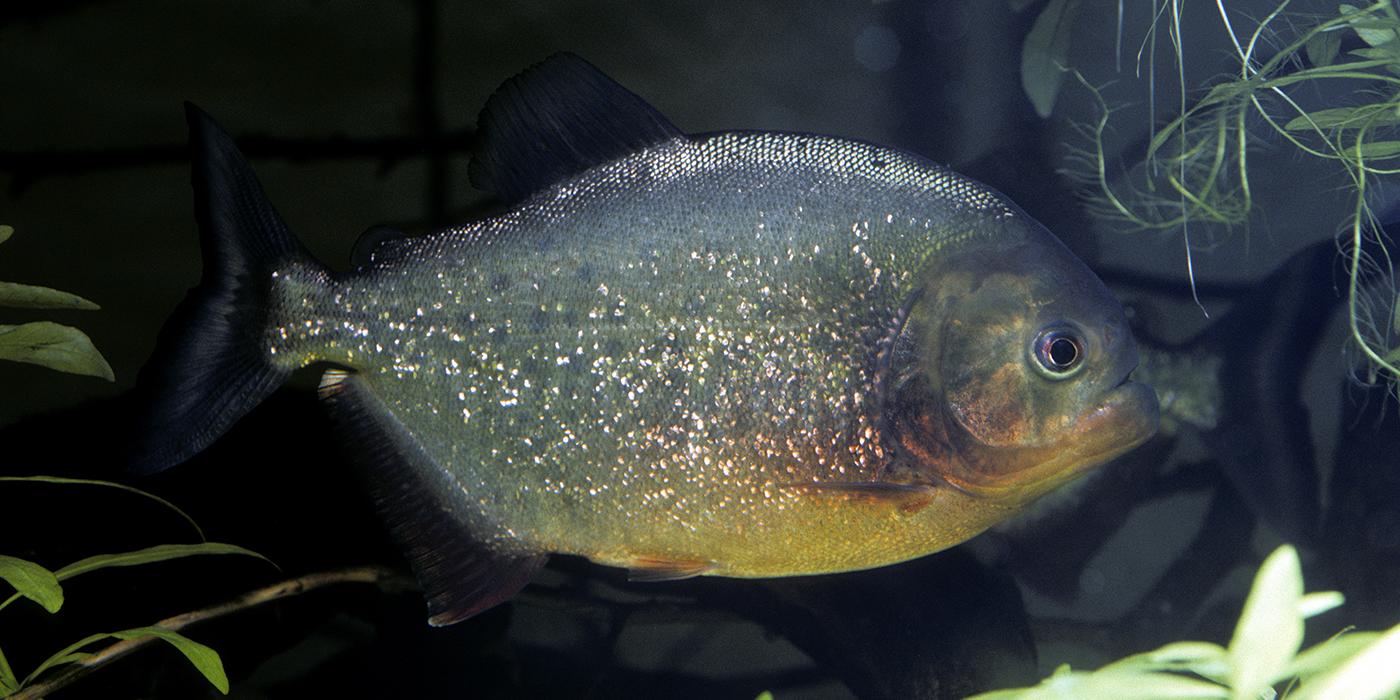Physical Description
Red-bellied piranhas are red on their undersides from chin and cheeks to belly. The head and body are various shades of gray; their sides are flecked with bright silver scales. The piranha's distinctly rounded and snub-nosed profile serves a function.
Beneath the high forehead are powerful muscles that attach to a short, stout lower jaw fitted with triangular, razor sharp teeth, which interlock neatly with a matching set above. This design allows piranhas to bite down with incredible force and shearing ability. However, these formidable teeth are not usually visible, being covered by thick, fleshy lips.
Size
They can grow to be a little over a foot long (30.5 centimeters) and weigh up to 4 pounds (1.81 kilograms).
Native Habitat
Red-bellied piranhas are found throughout the low elevation regions of the Amazon River basin. They inhabit both still and moving sections of the vast fresh-water Amazon River basin system.
Lifespan
Red-bellied piranhas have a lifespan of 10 years or more.
Food/Eating Habits
In the wild, a good portion of their diet consists of fins nipped from the tails of larger fish. Additional items on a piranha's menu can include bits of flesh, whole small fish, insects, aquatic invertebrates and occasionally, plant material in the form of figs and other ripe fruit.
At the Smithsonian's National Zoo, red-bellied piranhas receive a gelatin diet (a mixture of greens, proteins and micronutrients in a gelatin base), smelt, shrimp, herring and earthworms.
Sleep Habits
Smaller piranha search for food during the day, while larger fish tend to be more active at dawn and dusk.
Social Structure
They tend to travel in schools of 20 or more individuals.
Reproduction and Development
Red-bellied piranha reproduction begins with a courtship display involving swimming in circles. These piranhas are nest builders, with males creating bowl-shaped crevices in the sediment where eggs are placed. The eggs are laid in clusters and are attached to submerged aquatic vegetation. It is theorized that spawning could potentially correlate to the Amazon's wet season.
Conservation Efforts
This species is relatively common throughout its range.
Help this Species
Share the story of this animal with others. Simply raising awareness about this species can contribute to its overall protection.
Avoid single-use plastics, such as plastic bottles, bags and utensils. Choosing reusable options instead can help reduce plastic pollution.
Smithsonian's National Zoo and Conservation Biology Institute. (n.d.). Red-bellied piranha. Retrieved December 3, 2025, from https://nationalzoo.si.edu/animals/red-bellied-piranha
Animal News

Giant Panda Qing Bao Gets a Checkup ›

7 Spooktacular Animal Facts for Halloween ›

